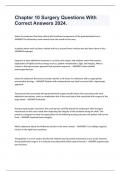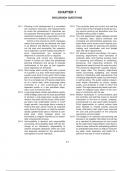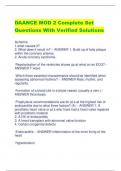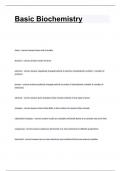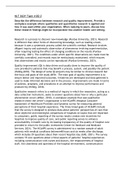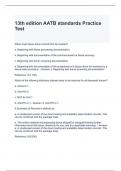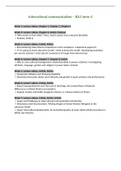Enquiry Question 3: What are the consequences of
globalisation for global development and how should different
players respond to its challenges?
,3.7 Globalisation has led to dramatic increases in development for some countries, but
also widening development gap extremities and disparities in environmental quality.
The richest 1% of the population have seen their share of global wealth increase from 44%
in 2009 to 99% in 2016. The result is an increase in inequality at a time when 1 billion
people still live on less than US$1.25 per day. This means that the development gap (the
gap between the very richest and poorest people and countries) has increased as
globalisation has accelerated. Overall, the global economy has grown enormously, far faster
than its population.
The already rich take a disproportionally large share of each year's new economic growth.
In contract, the wealth and incomes of the majority of people have grown more slowly over
time. Globalisation has not pushed large numbers of people into absolute poverty; instead,
global poverty has been halved since the introduction of the Millennium Development
Goals in 2000, with the greatest progress being made in Asia.
The number of people living in relative poverty (when a person's income is too low to
maintain the average standard of living in a particular society) has risen in many societies.
Measuring
Development
Measurement of
Definition Evaluation
Development
GDP The value of a countries In dollars = easy to compare
economic production inside a Distorted by exchange rates
nations boarder in a year (per An economic measure only
, No indication of distribution of
the wealth
capita)
Raw data - no account of cost of
living
Distorted by a number of high
earners
The mean income of a group of
An economic wealth
Income per people.
No indication of distribution of
Capita Mean income
the wealth
Total income or population size
Raw data - no account of cost of
living
Takes into account of cost of
PPP Purchasing Power Parity
living in a country
Reproductive health, maternal
Has social, political and
mortality rate, empowerment =
economic measures
Gender proportion of parliament seats,
Shows gender gap
Inequality Index proportion of females over 25
The higher the GII, the greater
with a secondary education,
the inequality
economic status
Index of 3 factors, 1 economic, 2
social
Relative index, don’t in a rank
Gross National Income, life order, to other countries, a
HDI
expectancy, education country may develop but rank
order remains the same if
countries above also develop, so
hides progress
A measure from 0 to 500, health Improves as social and economic
Air Pollution concern, measure ozone, carbon development improves
Index monoxide, sulphur dioxide, Impacts on health and life
nitrogen dioxide, particle matter expectancy
The steep rise in world money supply during the era of globalisation has been accomplished
by a changing spatial pattern of global wealth:
Average incomes have risen in all continents since 1950, but only very slowly in
the poorest parts of Africa
The greatest gains made by European and North American nations has widened
the income gap between the richest and poorest nations
Absolute poverty has fallen (when a person's income is too low for basic human
needs - food, home)
Many counties have advanced from low-income to middle-income status since the
1970's, resulting in a three speed world of developed, emerging and developing
economies



